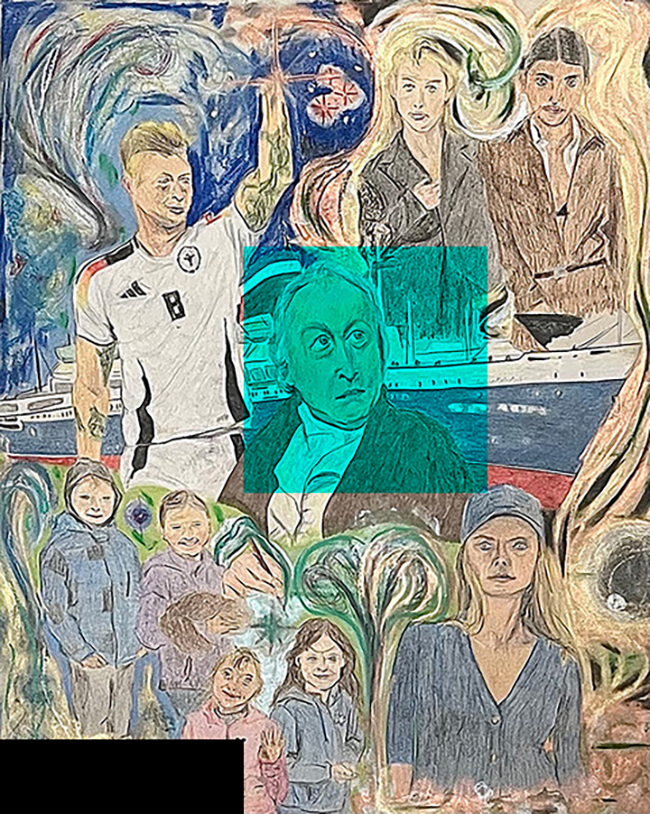Helena Kotnik’s work shows how naturally she blends deep psychological questions with bright, almost playful visuals. Trained at Barcelona University and the Akademie der bildende Künste in Vienna, and holding a Master’s degree, Kotnik has built a body of work that doesn’t just aim to be looked at—it invites you to feel something more layered. Her paintings are what she calls “psychological human landscapes,” where emotion, memory, and social commentary run just under the surface.

Her art is colorful but not careless. There’s always something simmering underneath the cheerful palette—an awareness of the world’s contradictions, a sensitivity to the way people move through life. She draws from a wide range of influences across art history, yet her voice remains her own. Each piece seems to bridge time: a nod to the past, a question for the present. She doesn’t just paint scenes; she paints the feeling of being alive.
The Work: Freedom (2025)
Freedom isn’t a painting that tries to explain itself too much.
It simply offers a feeling and lets you step into it.
Drawn with pencil colors and soft pastels on a 65 x 50 cm surface, the piece carries a lightness that matches its theme. There’s no heavy-handed symbolism or thick layering. Instead, the work flows the way a breeze moves through an open window—easy, natural, almost unnoticed until you pause and realize how much it matters.
Kotnik captures that rare moment when you feel completely in tune with yourself and the world around you. It’s the kind of feeling that doesn’t come often—when you know you’re exactly where you need to be, doing exactly what you’re meant to do. In Freedom, that feeling isn’t shouted out in bold strokes or loud contrasts. It’s whispered through delicate lines, soft blends of color, and a composition that feels as organic as breathing.
But Freedom doesn’t just rest in personal emotion. Kotnik layers in another idea: the flow of history.
The painting also speaks to how events unfold, how one action leads to another, almost like a chain reaction.
There’s movement here—not chaotic, not rushed, but steady. Like a river, history carves out new paths, and every twist and turn builds on what came before.
In this way, Freedom becomes about more than just the personal—it becomes about collective experience. It touches on the idea that freedom isn’t static. It evolves. It progresses. It’s built on what came before and what will come after. The feeling of personal authenticity mirrors the broader story of how societies shift and grow.
The artwork’s colors play a big role in delivering these ideas. Soft, almost naïve tones suggest a sense of innocence and hope. They avoid the heavy gloom that often weighs down work dealing with history or society. Instead, Kotnik gives us a more open, gentle version of both memory and ambition—a belief that movement forward can be full of lightness and trust.
Freedom doesn’t demand a complicated interpretation. It works because it speaks directly to something simple and universal: the desire to belong, the need to move forward, the quiet joy of feeling yourself flow with the current rather than against it.
Helena Kotnik’s gift is her ability to make serious ideas feel accessible without watering them down. Freedom carries emotional depth without the burden of emotional heaviness. It suggests that even the biggest movements—whether in personal growth or in the sweep of history—can start from a small, authentic place.
And sometimes, that’s enough.


